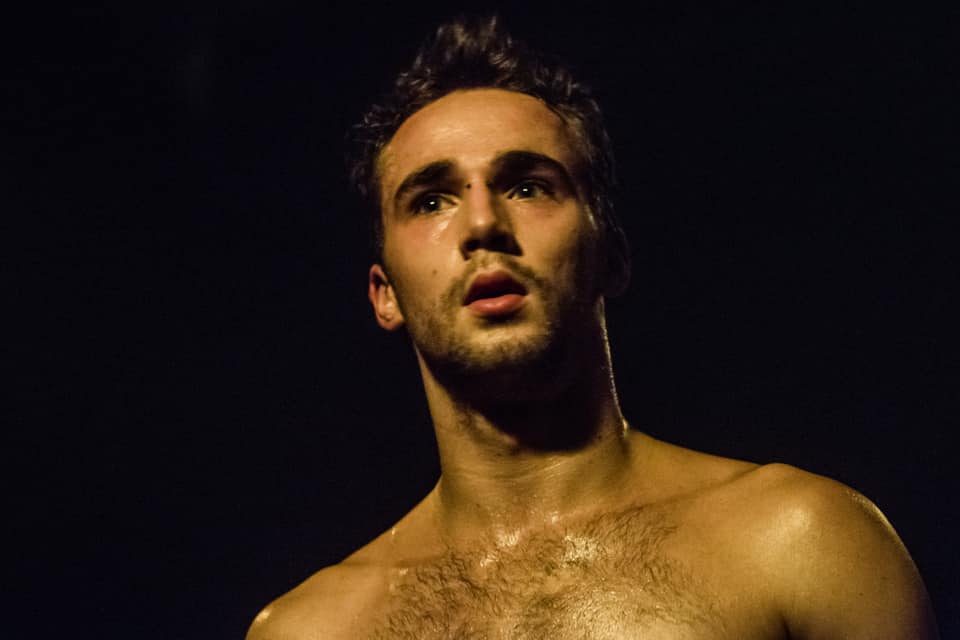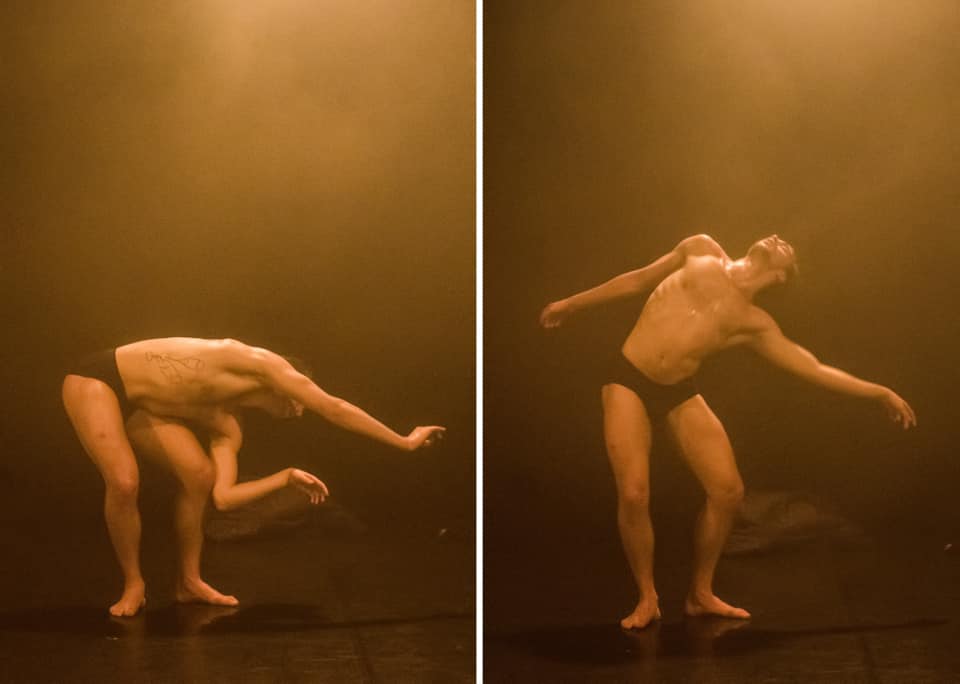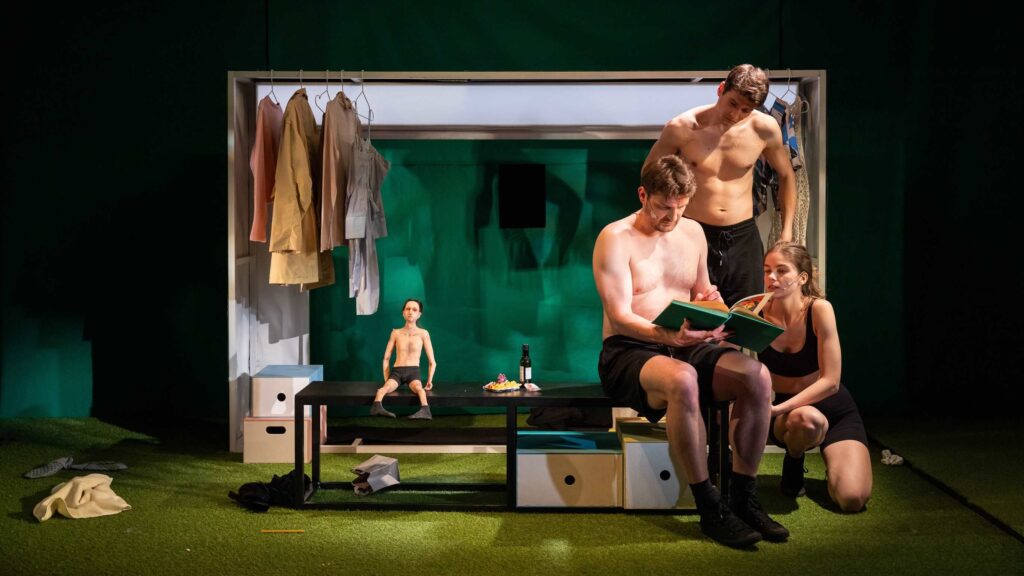Lithuanian young generation dancer Lukas Karvelis still studies at the Codarts Dance Academy in Rotterdam, but his work has already attracted the attention of dance professionals in a number of countries. Recently, he has become one of the winners of the International Solo-Dance-Theatre Festival in Stuttgart, where he presented his first version of the solo performance Blank Spots. In May, the performance was also shown to the audience of the international festival New Baltic Dance as well as to dance producers at the first Baltic Dance Platform.
“The festival is receding, the passions and impressions are abating, and yet the memory keeps clinging on to Blank Spots by young dancer Lukas Karvelis. A suspenseful debut mono performance is a distinct greeting of the artist,” theatre critic Rūta Oginskaitė writes about the first performance of a young dancer on the website dance.lt. “The man of today's world hiding behind the clothes, masks and images gradually sheds off all the layers until he remains naked, vulnerable, sad, far away from his own land, and yet so strong. Through dance Karvelis can express both inner states and the environment - the jungles of a foreign city affecting the hiding man as well as the Baltic roots, depopulation of the homeland, the resolution to continue living far away, to stop disguising and to carry on. Not to fear who you truly are. This is exactly why the very final minutes of Blank Spots keep thudding in my memory - the hand strokes of a collapsed artist equal the fading steps of the character, the beating of the heart.”
Lukas Karvelis has been working on his performance Blank Spots for a couple of years. When asked about how he was developing his character, the dancer told:
“This solo is dedicated to young people, my peers. While studying, I often attended various parties, where I saw young people doing crazy things. They overdose, suffer from depression and panic attacks. I felt that this culture turns you into a stranger; you become a false, not real 'you.' That's why in the first solo part I created the character that is repulsive to me - it's neither a man, nor a woman; you can't see its face; it's intangible and, at the same time, looks highly familiar because of the attitude towards life, the cynicism. I often observe these features among my peers. And yet, simultaneously, I put a lot of things that I hate about myself into this character. To see myself as an enemy.
In the second part, I wanted to create a complete contrast to the first character. He is simple, naked; it's like the first version of oneself. I thought a lot about the childhood, talked to my mother, looked through the old photo albums, took long walks in the forest that inspires me to make this character take shape. I also went to church that I have a really peculiar relationship with - when I was a child, every Sunday I used to be an altar boy during the Holy Mass; but I only did that to please my grandparents. Religion seemed very frightening to me. I thought that if I didn't pray before sleep, I would die the following day. I understood that it was also a kind of a mask, similar to that of my first character. Even though both parts look very different at first glance, they're actually very much alike - I associate going to church out of the imposed fear with participating in the parties I've just mentioned. In both cases, we tend to create a different self.
In the second part, I've included a multipart Lithuanian folk song sutartinė. I am deeply affected by Lithuanian folk music. When I turn on Lithuanian folk music and start dancing, an indescribable feeling overwhelms me. I don't need anything else then - I hear the music and the dance just flows out of me. When I dance Blank Spots abroad, it's very interesting to see that the song seems to be close not only to Lithuanians. Even though they've never heard the Lithuanian language and don't know that Lithuania exists, fascinated people approach me after the performance and ask what song was played in the second part; they ask to share it with them. It's so good to know that our folk music moves people from other countries as well”.
On the website 15min.lt, theatre and contemporary dance observer Aušra Kaminskaitė writes that Karvelis' dance is a very peculiar and unique phenomenon, whereas his performance Blank Spots is an attempt to, “understand oneself and the environment. The character that appears in the first part of the performance goes through various different states, which seem to occur unexpectedly, without any logic. This person is dressed up in numerous masks - and yes, dressed up, not hiding behind them. When he starts taking off his shoes, fur coat, shirt and trousers, you can think that this is just a change of masks. The character's pride in his body, the desire to demonstrate it only proves the previously observed interest, i.e. to be liked, to make an impression, and perhaps even to convince himself that he is worthy of love and attention. And yet, as soon as he reveals his face and the fragmented, engaging, intensive music is replaced with the Lithuanian folk song, the entire action gains a completely different meaning - undressing might have been a sort of purification to get rid of everything you impose on yourself fearing that the community doesn't need you naked and open.”
Rima Jūraitė agrees with the colleague on the website menufaktura.lt stating that, “Blank Spots by Lukas Karvelis simply allowed me to be; I felt absolutely engaged in what was happening on the stage. I had already known Lukas Karvelis' name when I went to the performance - some ten or more years ago, I saw him dancing. Those were solo performances on a kids' TV talent show. I had no expectations. It was just very interesting to see how the person who caught my attention in his childhood - and I do remember clearly that at that time his dance was highly memorable because of its emotionality and energy - danced now. So, I was very glad to have received the confirmation that all of this had been continuing. This moment of recognition moved me most and made me feel really happy.”
When asked about his plans for the nearest future, Lukas Karvelis mentioned performances with Blank Spots in Brazil and Italy, new projects in Holland and sharing of his knowledge in Lithuania, “At the moment, I want to travel abroad, to work with different artists and gain new knowledge. Of course, I always try to return to Lithuania and share that knowledge. I remember when I lived in Lithuania I felt great lack of such knowledge, so now it is highly important for me to get back and to share with others.”













